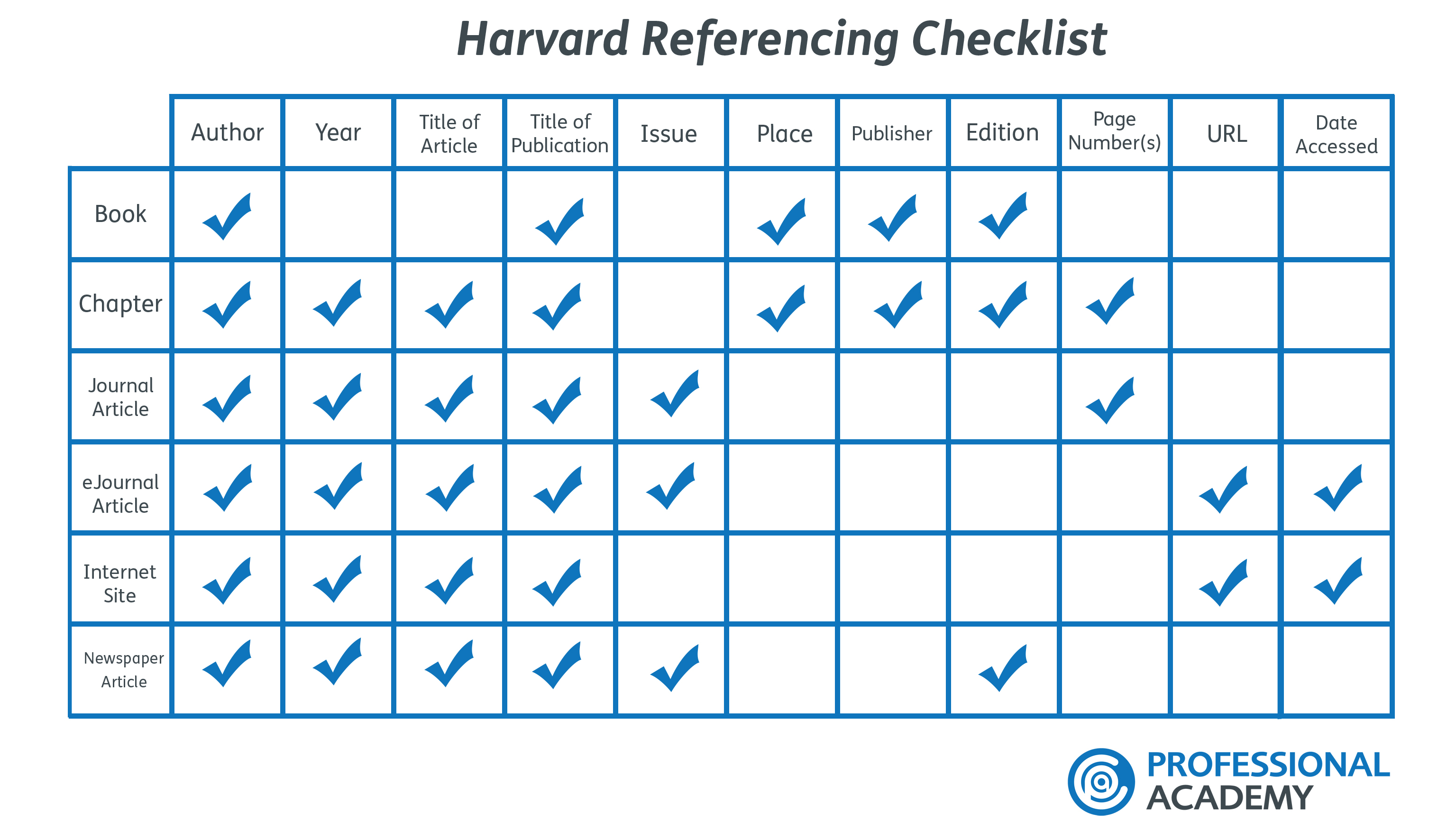



One of the questions we are asked the most by those returning to studying with a professional qualification is “how do I reference sources?” and “What is Harvard Referencing?” once the term comes up more and more in study resources.
What everybody already knows is that when writing an essay/paper it is essential to include referencing, something we probably all remember learning from school, it ensures the original source is credited and plagiarism is avoided. Harvard Referencing consists of two main parts; the citation within the text, and the list of referencing at the end.
Referencing is a necessary habit to get into, especially if you’re writing assignments often. It shows the research you have done and also how you have built your views in relation to theirs. Don’t forget referencing is different to a bibliography! Instead of giving a list of all the resources found and used to configure your opinion, referencing is used for the passages cited in your text.
If you are using a quote, conclusion or opinion in a text that you have come across in your research whether it be direct, paraphrased or summarized, it needs to be cited. The citation is included in the body of the text after the reference has been made, and has to entail the Author and the year of publication in brackets, as so:
Example: “At the crux of any discussion of what happened during the sixties, one inevitably comes up against the word revolution” (Green, 1999)
If there is more than one Author, in the citation it should be followed by et al.
Example: The lack of marketing leadership is damaging too many large companies (McDonald et al, 2006).
At the back of your assignment should be the list of references, this needs to include all the relevant detail so that whoever was to read your piece would be able to go find the source. The list must also be in alphabetical order starting with the Authors surname.
For books you should stick to this general rule:
Surname, First Initial. (Date) Title of book: given in italics. Edition. Place of publication, Publisher.
For articles the process is similar, however instead of the title, the publisher needs to be italics followed by the date published and the page number.
Example: Smith, K. (2006) from here to eternity. The Guardian (Education Guardian), 10 April, p12.
For online references, use the pattern above for articles then follow on with the date you personally accessed it in square brackets, and then finally the link.
Example: Anon, (2016) Marketing Theories – The Marketing Mix – From 4 P’s to 7 P’s. Professional Academy. [accessed 12 Jan 2016] Available at http://www.professionalacademy.com/blogs-and-advice/marketing-theories---the-marketing-mix---from-4-p-s-to-7-p-s

This blog aims to give a brief overview of Harvard Referencing but is in no means exhaustive in its explanation. For a more detailed explanation Professional Academy student’s should visit their resource area, if you are not a Professional Academy student why not find out more about our Professional Qualifications here or find a more in-depth breakdown of Harvard referencing here.